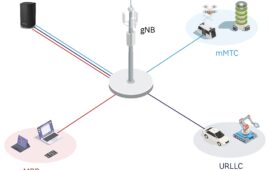The global wireless network is about to get a lot bigger. 5G is less than three years away with what many industry experts predict will be a gateway to unlimited data and bandwidth to connect more users in an increasingly crowded wireless world. The new network is expected to be robust enough for a billion connections and accessed by a third of the world’s population through more data carriers bringing 5G online.
The vision for 5G includes a combination of features to create the next generation network, including an order of magnitude faster than 4G, the mobility of 3G, and the 2G-like reach for IoT applications. With virtually no lag and throughput comparable to fiber, these features will together form the next generation 5G WAN. The industry does not expect standards until around 2019, so the definition is still somewhat fluid.
Beyond the hype and promise of 5G, here are three things you might not know:
4G and 5G will coexist
5G will work hand-in-glove with 4G for the foreseeable future. 1G (analog cellular) has been turned off for more than a decade. Many network operators have already “sunset” 2G, and while some are still active, 2G networks will indeed get turned down over the next few years to allow spectrum to be “re-farmed” or repurposed for 4G or 5G. The same will be true of 3G networks, though that will likely take a few years more.
Even with the performance and bandwidth promises of 5G, many carriers will maintain their investments in 4G for many years to come. In many cases, 4G will serve as the “national network” with 5G providing urban core super-high speeds. In other cases, 5G may be deployed broadly along with legacy 4G to manage a seamless transition over time.
In the meantime, 4G will continue to evolve and get better, with many operators introducing Gigabit LTE over the next year or two. This will also help satisfy our ever-increasing demand for bandwidth and make for a smoother transition to 5G.
4G transitions were hard, but 5G will be harder
5G will not simply happen overnight. While the final specification for 5G is not expected until 2019, several operators around the world are already conducting 5G trials today, which is a positive step in the right direction. However, it is important to remember that 5G will be more challenging to implement than 4G.
Current 5G end-user trials to test various aspects of the technology represent a temporary framework with a few restrictions and no interoperability between network operators. There is also no mobility since no cell-site handoffs are yet possible. The framework therefore only provides fixed wireless access – widespread 5G handset adoption will not occur anytime soon.
Accordingly, expect to see 5G implemented over time, first with fixed locations, then later with mobility. But with 4G getting better, this “pathway to 5G” shouldn’t be an overly rocky road.
SDN, 5G and IoT will intertwine
Many enterprises have been testing as well as deploying Software Defined Networking (SDN) and SDWAN in order to increase bandwidth and lower costs in their corporate networks. SDN fundamentally changes not just how networks are built and managed, but how they evolve. It makes networks more agile and efficient, enabling new functionality on software rather than on a hardware-constrained timeline.
Additionally, wireless connectivity and 5G is at the heart of the IoT. 5G technologies will not only connect people but also bring more efficient, lower-cost connectivity to the IoT. For the best outcome, SDN, 5G, and IoT should be thought of in tandem and intertwined.
For IoT to reach its fullest potential, intelligence, processing power and communication capabilities need to travel quickly and effortless across networks, mobile devices and connected sensors. Many experts share high hopes and expectations that 5G will deliver. But to handle 5G’s throughput capabilities and massive scalability, it will be critical to have Software Defined Networks rather than the old “big iron” paradigm.
5G could be the light at the end of the tunnel for unlimited wireless network bandwidth and performance. Once delivered, it can bring IoT to maturity by connecting more people and devices than ever before. 5G WAN will be the fundamental framework that securely connects people, places and things around the world.
About the author: A 17-year Verizon veteran and Executive Director of LTE Network Rollout, Lindsay Notwell comes to Cradlepoint with more than 30 years of operational, marketing, and sales experience within the telecommunications market. He spent most of the last decade working at Verizon, where he served in a variety of roles including Executive Director of LTE Strategy, Planning, and Implementation. In this position, Notwell played a crucial role as he led the planning and rollout of Verizon’s highly successful implementation of the world’s first large-scale Long Term Evolution (4G LTE) network.




